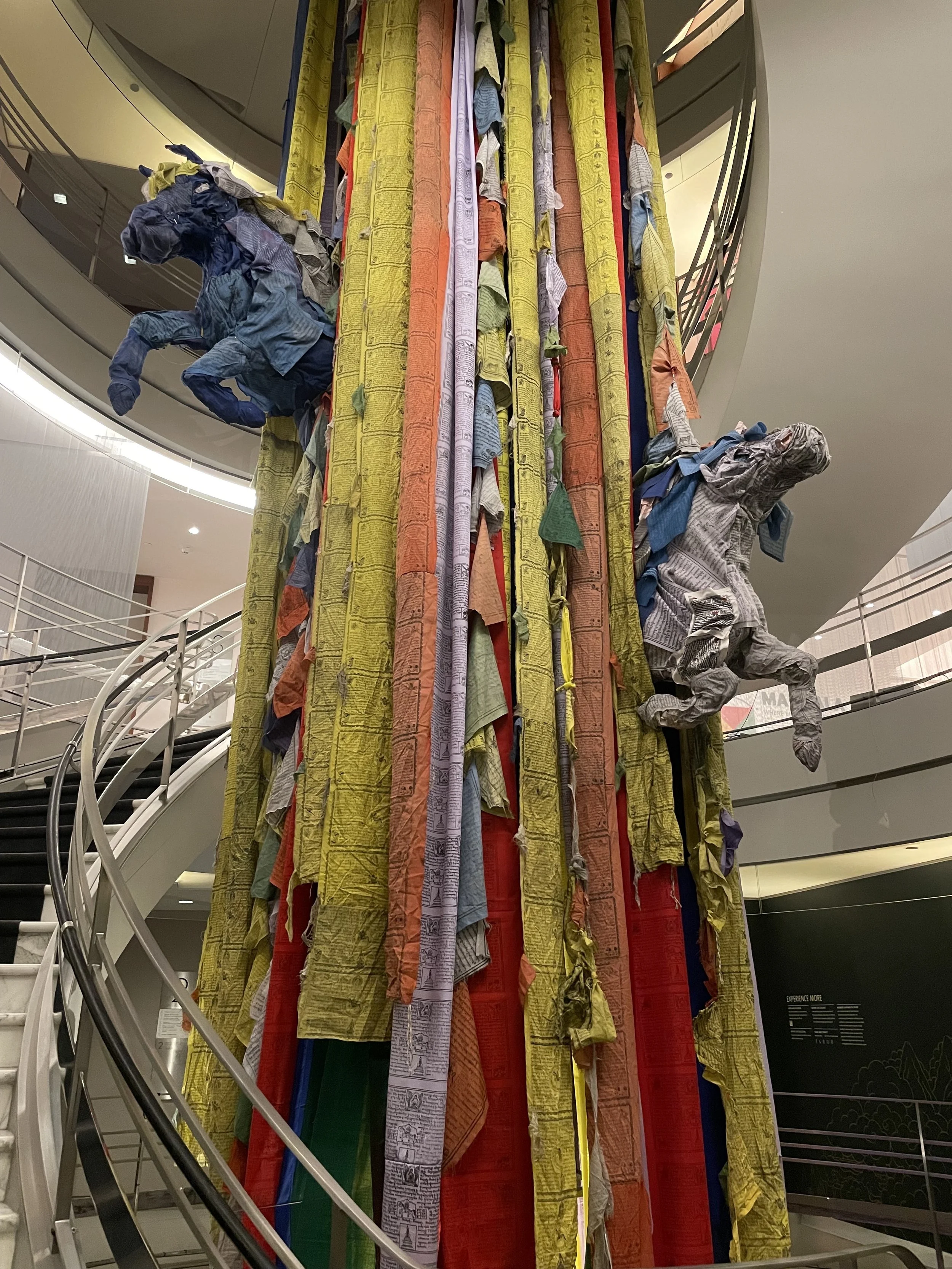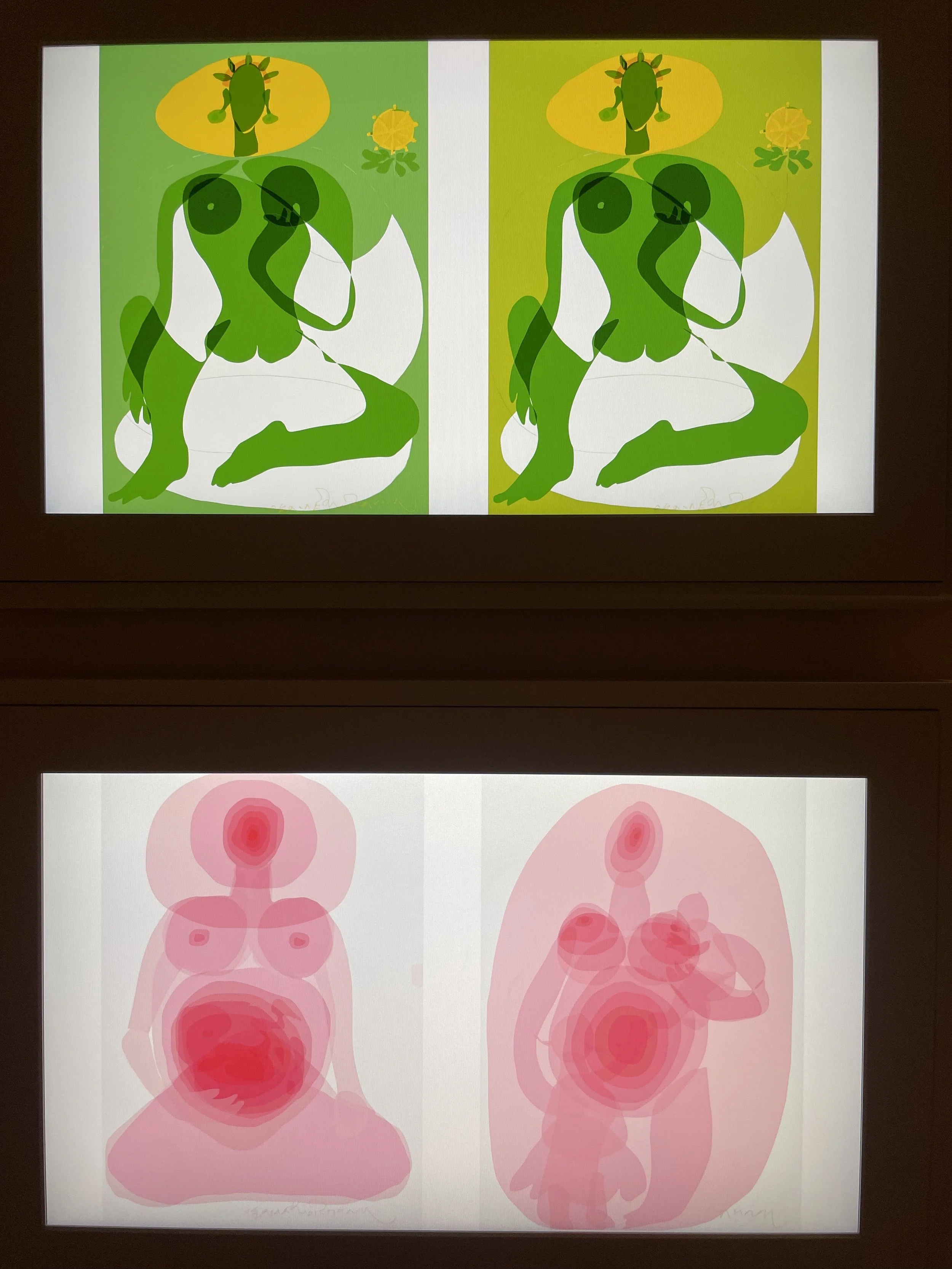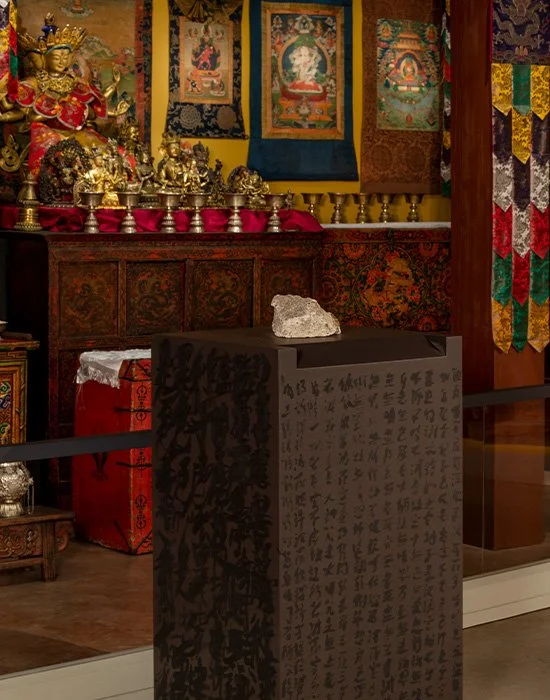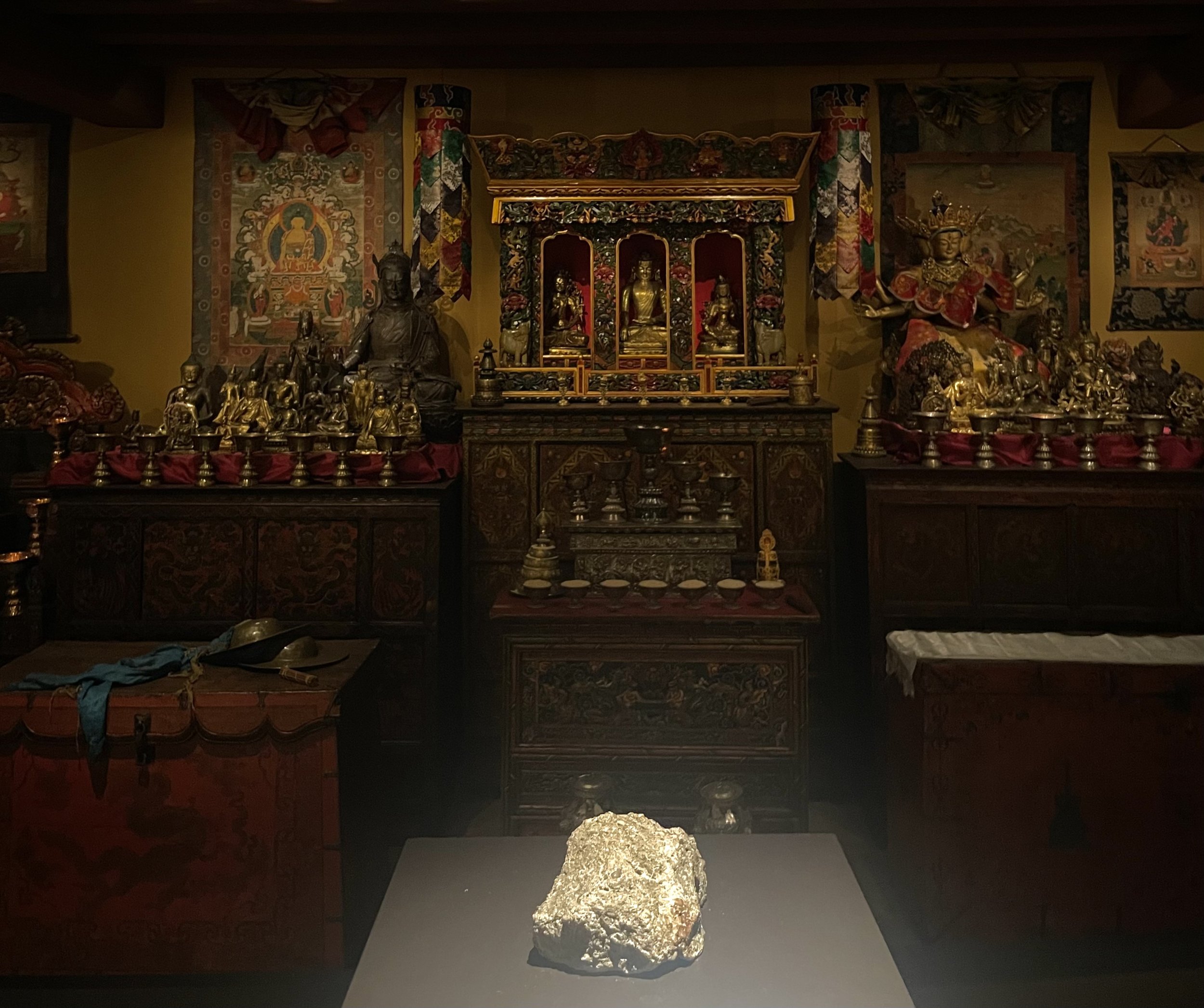Breeze Through Time from the Himalayas
Reimagine: Himalayan Art Now at The Rubin Museum of Art
Installation view of Out of Emptiness by Bidhata KC
Last year, I took a reporting trip to Tongren, known historically as Regong, in China’s Qinghai Province. This Tibetan region, nestled at an altitude of approximately 3,000 meters, is renowned as a pivotal birthplace of Himalayan art. Recently, it has transformed into a massive "factory" for Buddhist art, driven by China’s growing obsession with Buddhist paintings. My visit aimed to delve into a long-debated issue in art history and social sciences: the effects of the commercialization of religious art on traditional practices and its impact on the career paths and values of the local youth today.
Throughout my travels, I interacted with a diverse group of local artists, ranging from those engaged in the mass production of hand-painted Thangkas on assembly lines to the more fortunate ones who had the opportunity to tour the country and showcase their work in various galleries. Everyone has their own ideas of what it means to be a professional artist, shaped by their experiences and the extent of their interactions with the outside world. They also differ in their understanding of whether their work serves as religious outreach, art, or business. However, it’s undeniable that locals subtly feel the presence of an external hierarchy, one that they still haven’t fully understood or been able to explain to me.
Installation view of the staircase at the Rubin Museum.
As I walked into the Rubin Museum’s final exhibition, Reimagine: Himalayan Art Now, which marks the museum’s closure after two decades of showcasing Himalayan art in Manhattan, a thought struck me instantly: isn’t this the pinnacle that the most ambitious artists from the high Tibetan mountains in China could ever aspire to reach?
I wandered through the museum with mixed feelings, perhaps a bit troubled by the disparity in the amount of resources and attention these artists could receive, which felt jarring to me. Sometimes, I stared at ancient Thangkas, and at other times, I encountered contemporary artworks created by artists commissioned by the museum based on its collections. My reflections oscillated between viewing the museum as a sanctuary preserving human spiritual heritage and as an agent validating the commercial art market.
Top: Monsal Pekar, Self Portrait, 2021, digital art.
Bottom: Self-portrait — Life/My Daughter, My Son and I; 2021, digital art.
My understanding of the above issue varied as I encountered different works. Monsal Pekar, from Altro in the Tibet Autonomous Region, offered a digital reinterpretation of Green Tara in a style reminiscent of Matisse’s cutouts, transforming this protective figure into a semi-abstract female form. Elsewhere, the Nepali artist IMAGINE (A.K.A Sneha Shrestha) blended traditional Sanskrit scriptures with a graffiti-esque approach on canvas, and the Nepali artist Bidhata K C repurposed tin cans into sacred prayer wheels.
Installation view of Mending and Moving by IMAGINE (A.K.A. Sneha Shrestha)
The featured artists, trained in Western art academies, wrestle with the dual challenge of honoring their cultural and religious heritage while adapting it for a global audience. As they infuse traditional motifs into their work, I feel there is a risk that the profound depth of these elements may be diluted, often in efforts to engage with pressing contemporary issues such as identity politics and environmental concerns.
Installation view of Divine Generation by John Tsung.
There are also works that defy this trend. For example, there is an easily overlooked work, titled Divine Generation, appearing merely as a stone placed in front of the Tibetan Buddhist Shrine Room. However, I’m struck by its ability to evocatively distill the spiritual essence of Himalayan sacred spaces into the perceptions of contemporary audiences without losing any of its potency.
When I place my hand on the stone, a tapestry of sonic landscapes begins to unfold, emanating from every corner of the space. The electronic candles on the altar flicker in synchrony as if a breeze from the distant Himalayan lands had traveled through history and space to reach here.
In an instant, all my memories of stepping from the glaring daylight into the temples in Tongren surged back—the sudden blindness from the shift in light, the immediate hush that married the sensation of illumination, the slow return of sight capturing the dim glow of a splendid altar, and the barely audible whispers among the minuscule spirits, gradually discerned by attentive ears.
Alternate view of Divine Generation.
The sound artist John Tsung, with a Buddhist upbringing, created this site-specific work by transforming vibrations from around the Rubin Museum’s spiral staircase into ambient sound. When we place our hands on the rock, it’s as if we are touching an organ within the museum’s body, feeling the subtle interplay of airflows and pulses—this almost takes me back to childhood moments spent pressing an ear against my mother’s stomach, awaiting the thunder-like sounds of her belly rumbling. With this piece, Tsung probes deep into fundamental Buddhist ideas: the concept of anatta, which challenges the notion of a permanent self; the interconnectedness of all things; and the transient nature of existence.
As I left the museum, a lingering question from my previous trip to Tongren seemed to finally dissolve. It is about the fine line those artists and their works walk between celebrating traditions and reducing them to mere tools for contemporary discourse, self-expression, and other desires. Now I realize that it’s just a perpetual journey of self-cultivation and collective evolution, themes that have resonated within Buddhism for centuries.
Reimagine: Himalayan Art Now
Curated by Tsewang Lhamo, Roshan Mishra, and Michelle Bennett Simorella
March 15–October 6, 2024
The Rubin Museum of Art
150 West 17th St, New York, NY 10011
Featuring work by 32 artists from the Himalayas, Asia, and the diaspora, whose artworks are shown in dialogue with objects from the Rubin Museum’s collection. These artists hail from a wide range of locations, including Bhutan, Canada, China, England, France, India, Japan, Nepal, Switzerland, Taiwan, Tibet, and the United States. Notably, many of these artists are presenting their work in the United States for the first time






